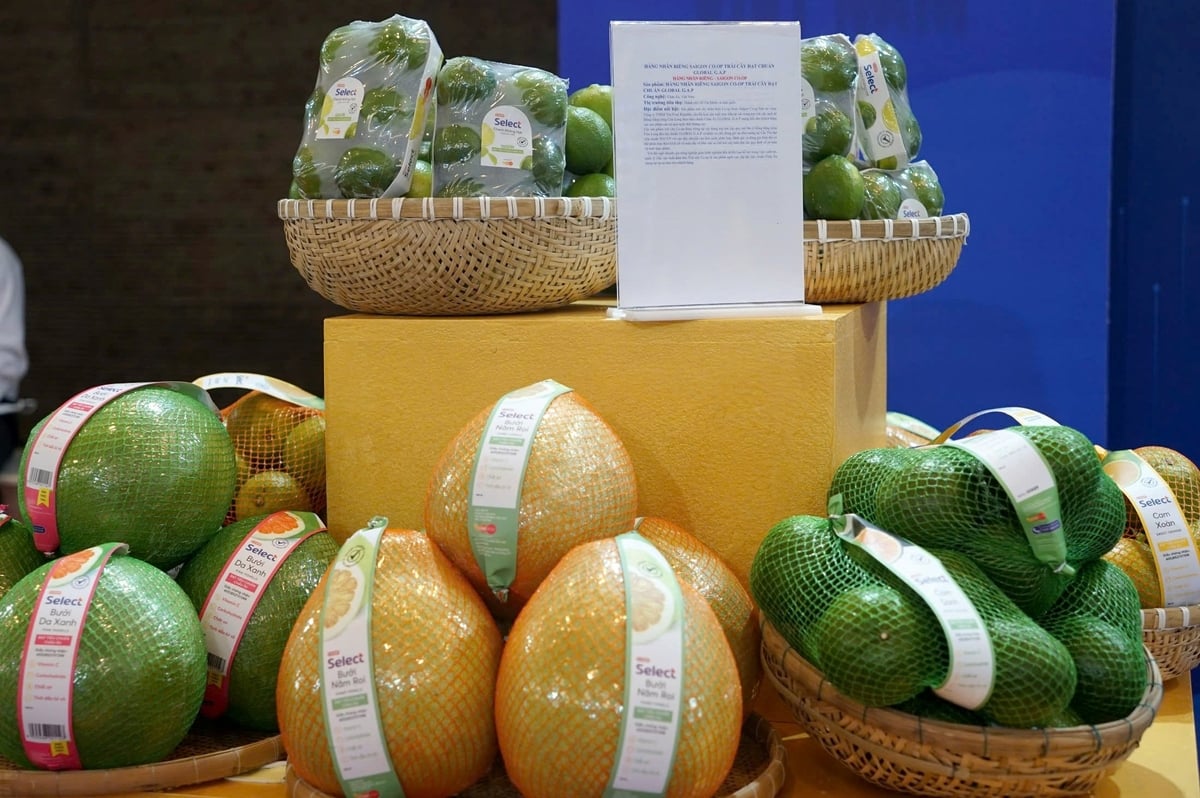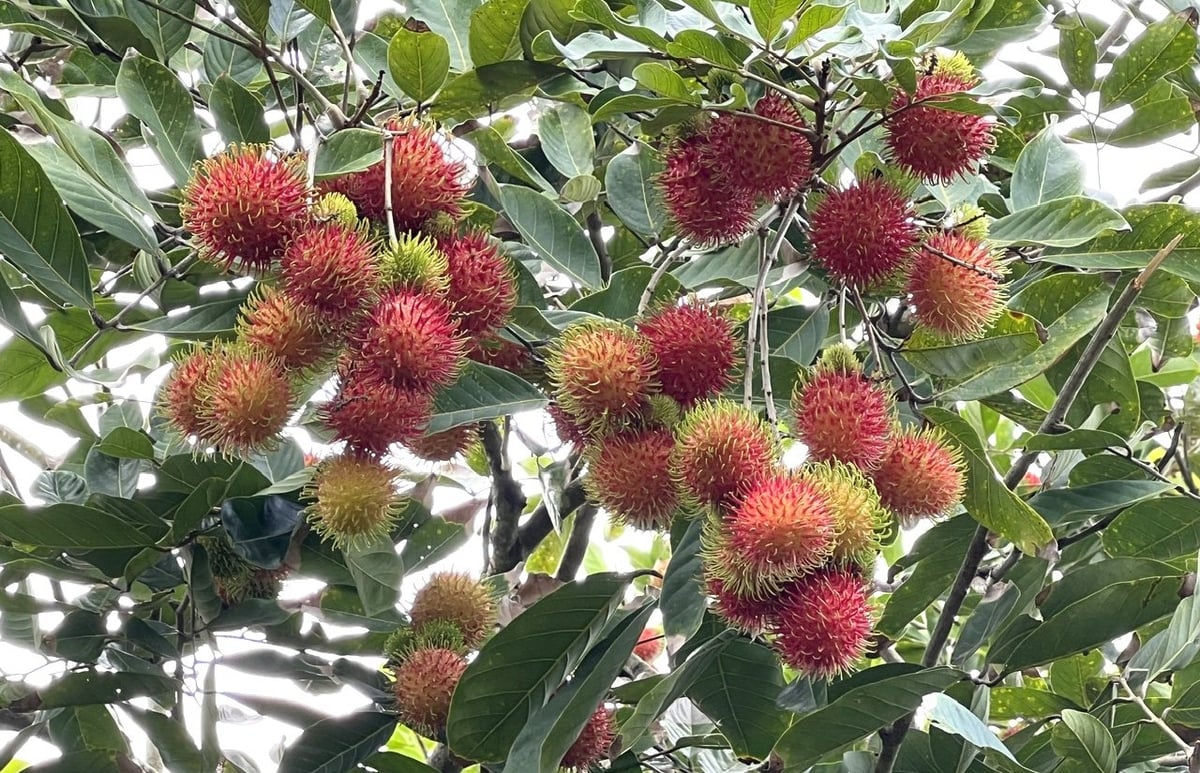December 31, 2025 | 06:07 GMT +7
December 31, 2025 | 06:07 GMT +7
Hotline: 0913.378.918
December 31, 2025 | 06:07 GMT +7
Hotline: 0913.378.918
Vina T&T Group is currently one of the leading fruit exporters in Vietnam. In recent years, alongside the Chinese market, the company has actively expanded its fruit exports to various other markets, including the U.S.
According to Mr. Nguyen Phong Phu, Technical Director of Vina T&T Group, the company has been exporting fruit to the U.S. market for many years and has successfully established a solid foothold there.

Vietnamese fruits have great potential to boost exports to a wide range of markets. Photo: Nguyen Thuy.
According to Mr. Phu, during the process of market research, product promotion, and marketing, Vina T&T has found that Vietnamese tropical fruits are highly favored in many international markets. Consumers in various countries express a strong desire to have regular access to Vietnamese fruits.
However, fresh fruits have a limited shelf life, while transporting them to distant markets takes considerable time. Shipping fruits to the United States by sea takes at least 25 to 30 days, and to Europe, it takes between 30 to 40 days.
Due to challenges in transportation and preservation, Vina T&T initially focused on developing the U.S. market for fruit exports. After establishing a firm foothold there, the company expanded into other markets such as Europe, Australia, and South Korea. They have high demand for tropical fruits, including those from Vietnam.
Mr. Nguyen Thanh Binh, Chairman of the Vietnam Fruit and Vegetable Association (Vinafruit), noted that in addition to the Chinese market, Vietnamese fruit exporters have recently increased shipments to major markets such as Europe, the U.S., South Korea, and Japan. Although Vietnam's market share in these regions remains modest, they have become traditional and steadily growing markets for Vietnamese fruits.

Many markets have strong demand for tropical fruits, such as the Middle East and South America holding significant potential for Vietnam to boost fruit exports. Photo: Nguyen Thuy.
In addition, there remain many highly promising markets that Vietnamese fruit exporters should focus on tapping into. First and foremost are the markets that fall within the 17 bilateral and multilateral free trade agreements (FTAs) that Vietnam has signed. To date, businesses have yet to fully leverage the benefits of these agreements to access and expand into these markets. These FTAs offer favorable tariff conditions and a legal framework to help reduce export costs and improve competitiveness, but their potential remains largely underutilized.
Beyond these, regions such as the Middle East and South America also hold significant potential for Vietnam to boost fruit exports. These markets have rising incomes, growing populations, and an increasing demand for high-quality agricultural products, including tropical fruits. However, Vietnamese businesses will need to conduct thorough market research and build strong distribution networks to enter and sustain their presence in these markets successfully.
Mr. Binh stated that Vietnam is running a trade deficit in many fruit and vegetable products from the U.S. “Fruits and vegetables fall into the category with relatively low competitive advantage, so they should be prioritized in early bilateral negotiations,” he emphasized.
Overall, there are still many export opportunities outside of the Chinese market that companies can explore. However, according to Mr. Nguyen Thanh Binh, Chairman of the Vietnam Fruit and Vegetable Association, the fruit industry should first focus on fully capitalizing on traditional and major markets such as China, the U.S., South Korea, Japan, and the European Union. These markets still offer substantial room for growth, but to make the most of them, the industry must improve its capabilities to meet the increasingly strict standards on food safety, traceability, sustainability, and packaging.
According to the Agency of Foreign Trade under the Ministry of Industry and Trade, while fruit and vegetable exports to China declined in the first five months of 2025, exports to many other markets, especially the U.S., experienced strong growth. In the first five months of 2025, Vietnam’s fruit and vegetable exports to the U.S. reached USD 208 million, up 65% compared to the same period in 2024.
Also in the same period, exports to several major markets continued to grow at a double-digit rate compared to 2024: Japan (up 21%), Taiwan (up 20%), the Netherlands (up 21%), Australia (up 19%), the UAE (up 41%), and Germany (up 32%). These figures demonstrate that diversification of markets is not only possible but already underway to offer a clear path for Vietnamese fruit for expanding globally.
Translated by Kieu Chi
/2025/12/29/2812-1-182339_699.jpg)
(VAN) The price of mangrove forest carbon credits is high because this forest type not only delivers significant environmental value but also plays a crucial role in addressing other issues.
/2025/12/29/5840-0-115141_514.jpg)
(VAN) From 2026, many EU markets will require shrimp to be electrically stunned before ice immersion, forcing exporters to change technologies to retain market share.
/2025/12/28/4951-2-104623_113.jpg)
(VAN) Rubber exports are forecast to remain under downward pressure in the coming period, as global rubber consumption shows signs of slowing, according to ANRPC's projections.
/2025/12/28/5120-1-093308_94.jpg)
(VAN) Many agricultural products are of sufficient quality to join global supply chains, yet fail to pass the first gateway when entering international markets due to packaging and information in English.
/2025/12/27/2453-2-172141_426.jpg)
(VAN) The sharp decline in the number of EU warnings in 2025 is regarded as a positive signal for the future orientation of Viet Nam’s agricultural exports.
/2025/12/27/1547-2-220434_536.jpg)
(VAN) For many businesses, exporting is a costly trial. But for those choosing a long-term path, small orders are a way to keep markets and learn the rules.
/2025/12/27/2522-1-090748_662.jpg)
(VAN) The 'Large-Scale Rice Field' project has been implemented in An Giang across a total area of more than 5,582 ha, comprising 73 large-scale fields and attracting the participation of 2,027 farmer households.